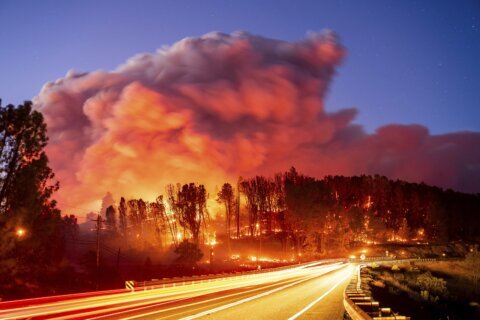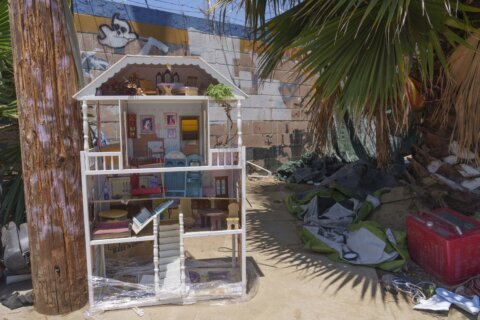(CNN) — It has been 40 years since Sally Ride became the first woman from the United States to travel into outer space. June 18 marks the anniversary of Ride’s ceiling-shattering, six-day mission on the space shuttle Challenger in 1983.
The US space program was in operation for more than two decades before a female astronaut claimed a seat on a NASA rocket. During the space agency’s earliest years, officials deemed spaceflight a feat only suitable for men, and specifically, military test pilots.
Ride was also posthumously the first acknowledged gay person to become an astronaut.
She was not open about her personal life, according to former NASA astronaut Steve Hawley, who was married to Ride from 1982 to 1987. However, the educational company she cofounded, Sally Ride Science, revealed more of her personal life in her 2012 obituary, recognizing her longtime partner, Tam O’Shaughnessy, after Ride died of pancreatic cancer.
But since women were first introduced to the US astronaut corps, NASA hasn’t looked back.
The US space program currently has its most racially and gender-diverse astronaut roster in its history, although an audit by NASA’s Office of Inspector General found a decade-long strategy has not made a meaningful impact on its diversity statistics across the agency’s workforce and leadership. Still, earlier this year, astronaut Christina Koch was selected to become the first woman, along with astronaut Victor Glover, the first Black man, aiming to travel to the moon as crew members of the Artemis II mission.
Ride burst onto the scene in the 1970s with her scholarly acumen, an insatiable desire to follow her interests and a demand to be treated equally despite the societal constraints that were only beginning to loosen at the time, remembers journalist Lynn Sherr, who is Ride’s biographer.
“Keep in mind — Sally was born in 1951. That was a time when outer space was science fiction, and women’s rights were almost nonexistent,” Sherr told CNN.
She remembers the bond she shared with Ride quickly deepened as a result of their shared understanding of the challenges navigating a man’s world as a woman: Ride in the astronaut corps and, before that, the field of physics, and Sherr in the largely gender-segregated field of journalism.
“She just got it,” Sherr said of Ride’s ability to navigate gender issues. “She knew how to be smart, brave, cool, work her ass off, get her job done — and do it really well.”
Sherr’s book “Sally Ride: America’s First Woman in Space” was first published in 2014. It offers an intimate and holistic account of Ride’s life. Her story is sometimes told from the perspective of Sherr, who covered space at ABC News during Ride’s historic moments and became her close confidant, even sharing family vacations.
The biography recounts fascinating anecdotes — including the time Ride played in a mixed-doubles tennis exhibition match opposite pro legend Billie Jean King while the Rev. Martin Luther King Jr.’s sons served as ball boys. And then there was the instance when Ride traveled to Edwards Air Force Base in California to watch an early space shuttle test flight alongside King Charles III, then Prince of Wales.
Sherr also included the now-infamous story in which Ride remembers NASA engineers asking her how many tampons she would need in a weeklong flight to space. (“They asked, ‘Is one hundred the right number?’” Ride said, according to the book.)
CNN conducted a brief interview with Sherr in honor of the 40th anniversary of Ride’s first spaceflight.
Breaking down barriers
One of the few women among hordes of male doctoral students of physics at Stanford University, Ride didn’t seriously consider a job as an astronaut until she spotted an article in The Stanford Daily about NASA recruiting women in 1977, Sherr recounted in her book.
Ride got her role as an astronaut candidate after initially mailing in an application — one of more than 8,000 people that did so. Of those, only 1,251 women were considered qualified by NASA.
“There were no female role models,” Sherr said.
The Soviet Union sent the first woman to space. Cosmonaut Valentina Tereshkova was launched into orbit in 1963. It would be two decades before the next woman would fly into space — another Soviet cosmonaut, Svetlana Savitskaya, in 1982. Ride’s first flight followed a year later.
Before NASA’s decision to allow female astronauts, in the 1960s there was pushback to the idea of women in the astronaut corps. Sherr’s book includes a copy of a letter about women’s involvement in spaceflight across which then-Vice President Lyndon B. Johnson had scrawled, “Let’s stop this now!”
But those barriers couldn’t last forever.
“When we finally realized we could do it, we could do anything,” Sherr said, referring to women. “That’s when we started kicking in the doors and getting to where we wanted to be.”
Keeping her private life secret
Ride was perhaps the most famous person in the country after her inaugural mission to space, but Sherr said the limelight weighed on her. Despite their closeness, Ride also hid her sexuality and even her cancer diagnosis from Sherr.
“Her mother knew she was an introvert. She didn’t want to share her personal life with the world,” Sherr said. “She wasn’t someone that wanted to say, ‘Look at me, look at what I’m doing!’ She wanted to do it, maybe get credit for it, and then she wanted to go off and do her own thing.”
Sherr only found out that Ride’s partner had been O’Shaughnessy, a fellow scientist and former tennis pro who was with her for 27 years, when Ride passed away.
“I believe — and I’m pretty sure this is right — that she did it partly to protect NASA,” Sherr said of why Ride kept her sexuality private. “She thought there were more important things to talk about.”
Sherr remains friends with Ride’s partner, O’Shaughnessy, who in 2001 cofounded Sally Ride Science, which is now a nonprofit operated by the University of California, San Diego. The organization encourages women’s involvement in STEM and hosts panels each year, which Sherr has moderated.
A trailblazer’s legacy
Ride’s ambition and love of knowledge extended far beyond her role as an astronaut, Sherr noted.
Ride was a professor of physics at UC San Diego and gave lectures for a course she called “Physics for Poets.” (She had double-majored in English and physics.) She cowrote children’s books with O’Shaughnessy. She served on the presidential commissions that investigated both space shuttle disasters — Challenger in 1986 and Columbia in 2003. She was also a noted environmentalist.
“Human exploration was not her first priority,” Sherr said. “It was taking care of planet Earth. And this was in the 1980s and ’90s — she was way ahead of her time.”
Ride broke through perhaps the toughest barrier for women in spaceflight, but Sherr said there’s a need to acknowledge and honor each additional pioneering step: Eileen Collins, the first female mission commander of a US spacecraft; the first all-female spacewalk by NASA’s Koch and Jessica Meir, and — soon — Koch’s upcoming mission as the first woman to travel to the moon.
Still, despite the fact that 652 people have traveled to space, according to NASA spokesperson Rob Navias, fewer than 100 have been women. And only around 1 in 5 space industry workers are women, according to the United Nations.
“Do I believe Sally would have thought right now we’d be further along than we are? Yes,” Sherr said. “We have to keep doing it. We can’t have any backsliding.”
The-CNN-Wire
™ & © 2023 Cable News Network, Inc., a Warner Bros. Discovery Company. All rights reserved.







